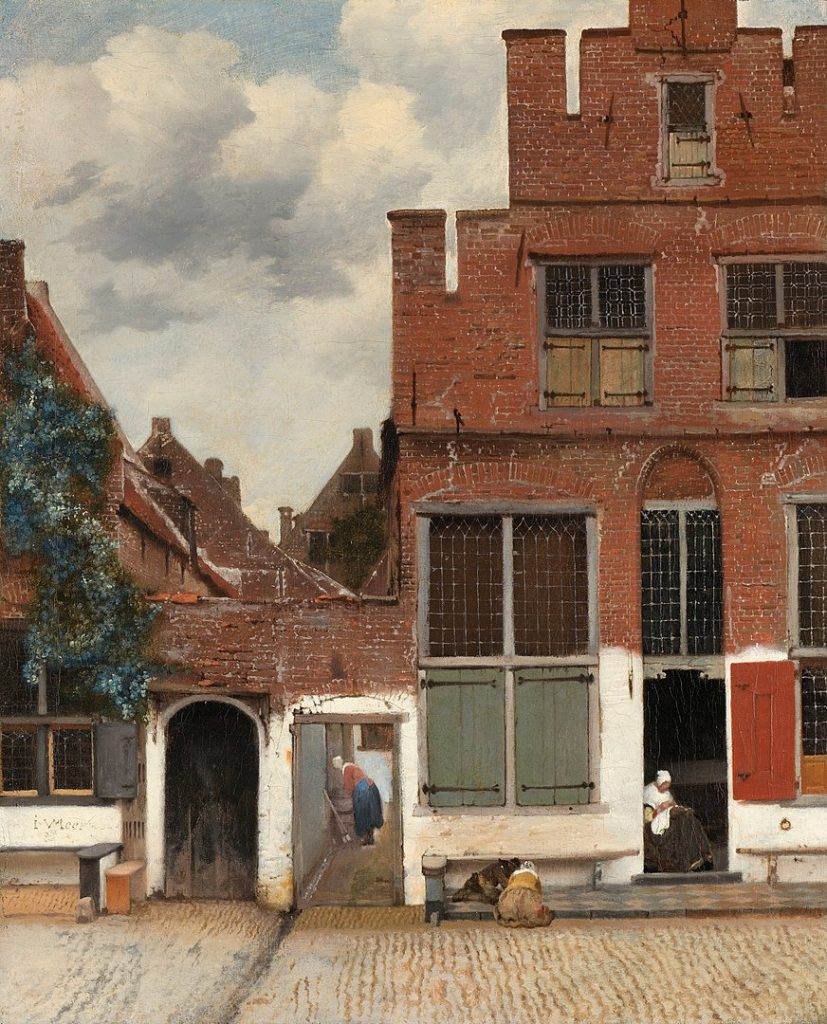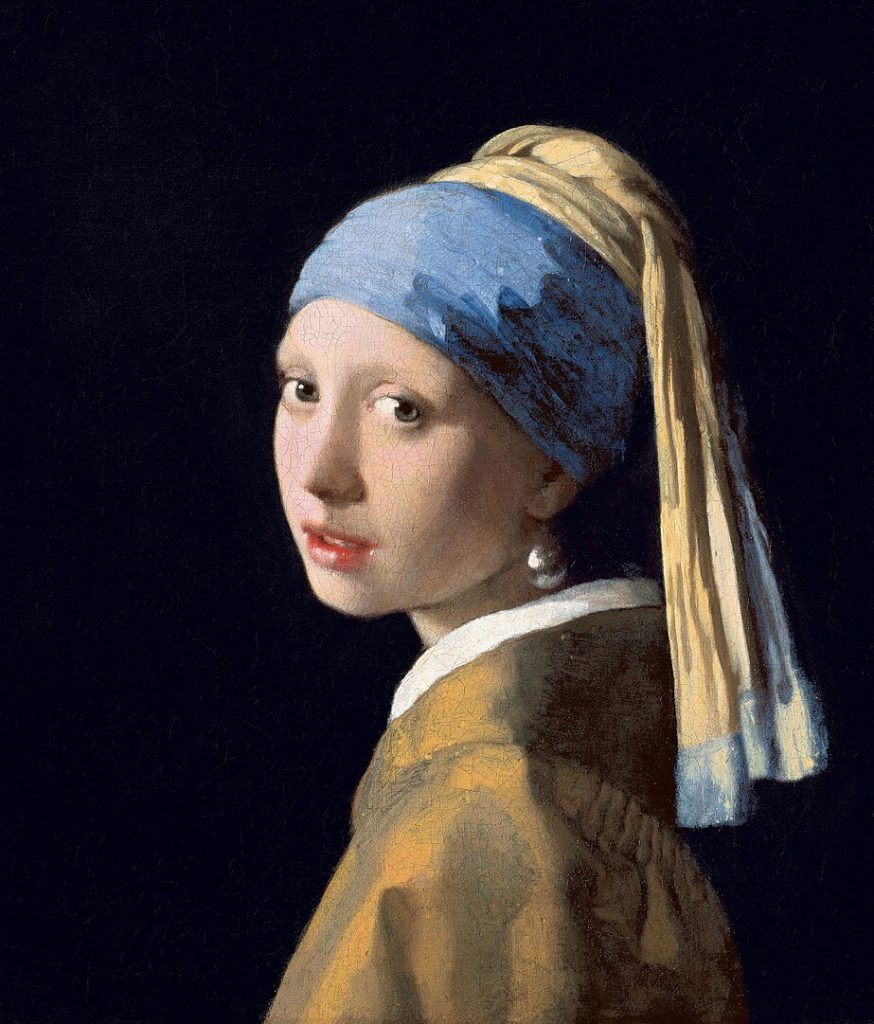
Johannes Vermeer (1632–1675) was a Dutch painter of the Baroque era, best known for his masterful use of light, meticulous attention to detail, and intimate scenes of daily life. Vermeer’s works are characterized by their realistic depictions of domestic interiors, often featuring women engaged in various activities. Despite producing a relatively small number of paintings during his lifetime, Vermeer’s art has had a profound impact on the history of Western art, and he is regarded as one of the greatest Dutch painters of the 17th century.
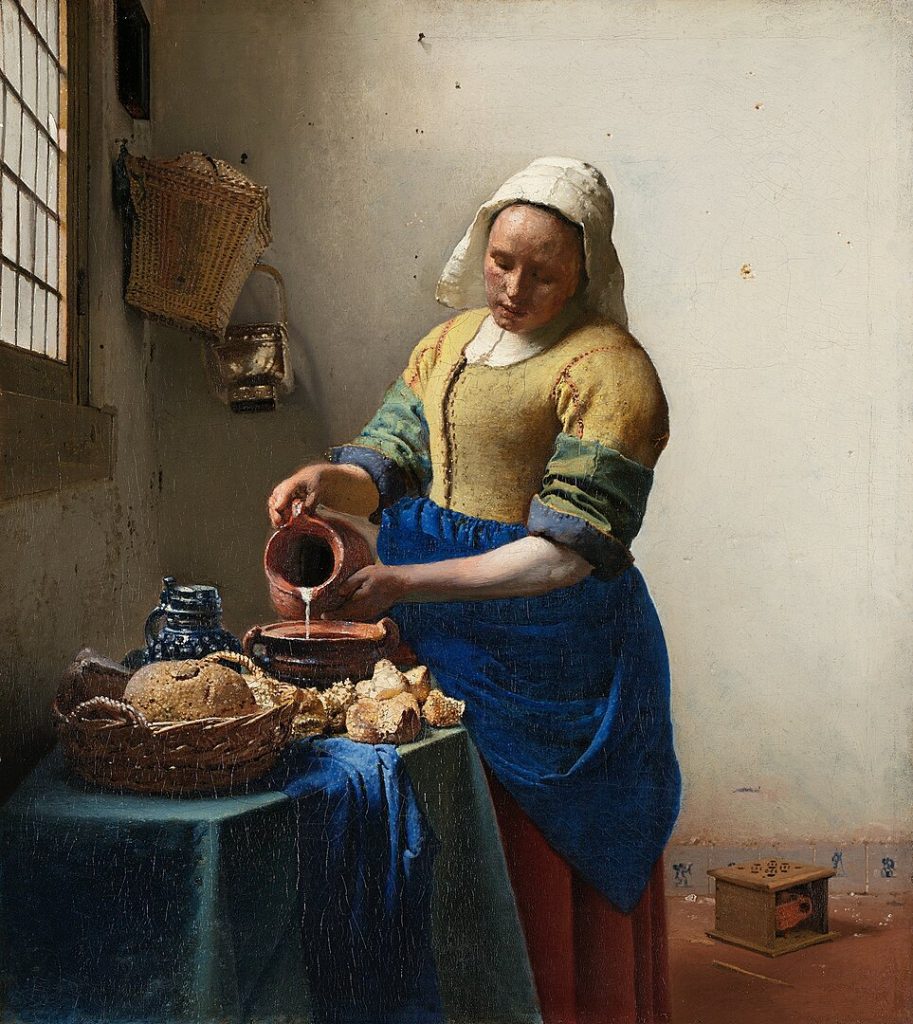
- Early Life: Vermeer was born in Delft, Netherlands, in 1632. Little is known about his early life and training, but it is believed that he may have studied with local painters in Delft.
- Artistic Style: Vermeer’s paintings are characterized by their luminosity, meticulous attention to detail, and the use of soft, natural light. He often employed a camera obscura—a device that projects an image onto a surface—as a tool to achieve precise and realistic effects in his compositions.
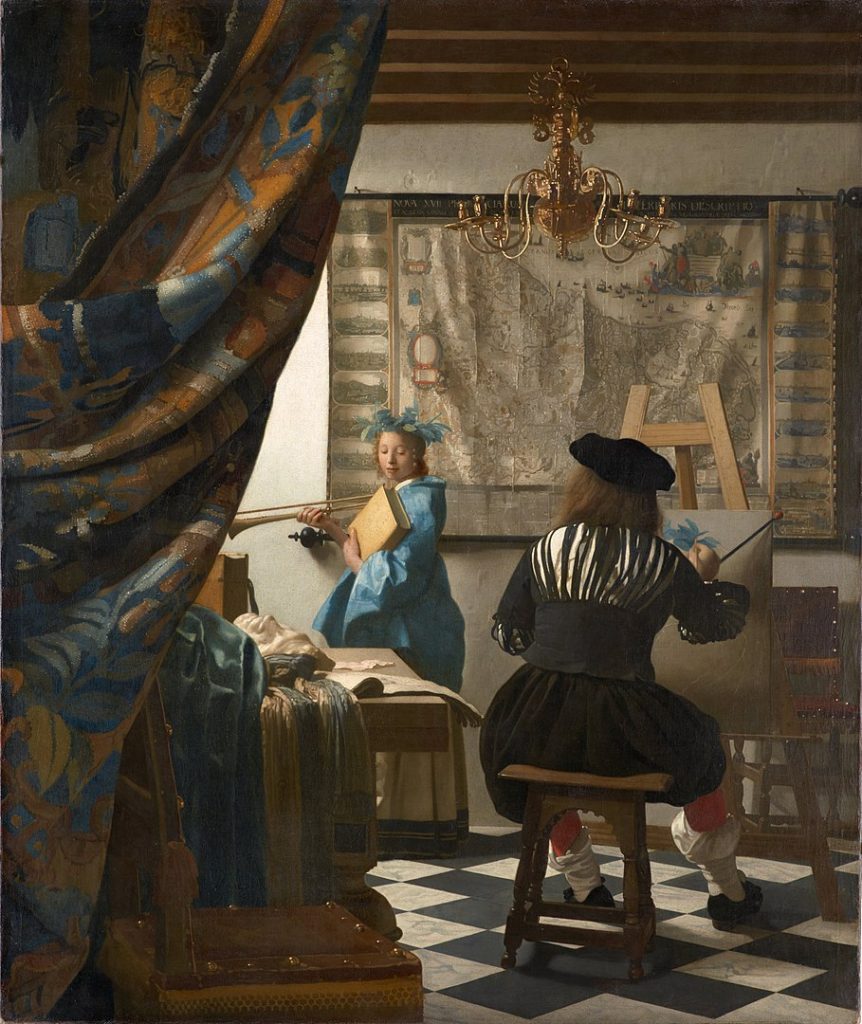
- Subjects: Vermeer’s favorite subjects included domestic scenes, portraits, and genre paintings. Many of his works depict women engaged in everyday activities, such as reading, writing, or playing musical instruments.
- Master of Light: Vermeer’s mastery of light is one of his defining characteristics. He skillfully portrayed the effects of light and shadow, creating a sense of realism and atmosphere in his paintings.
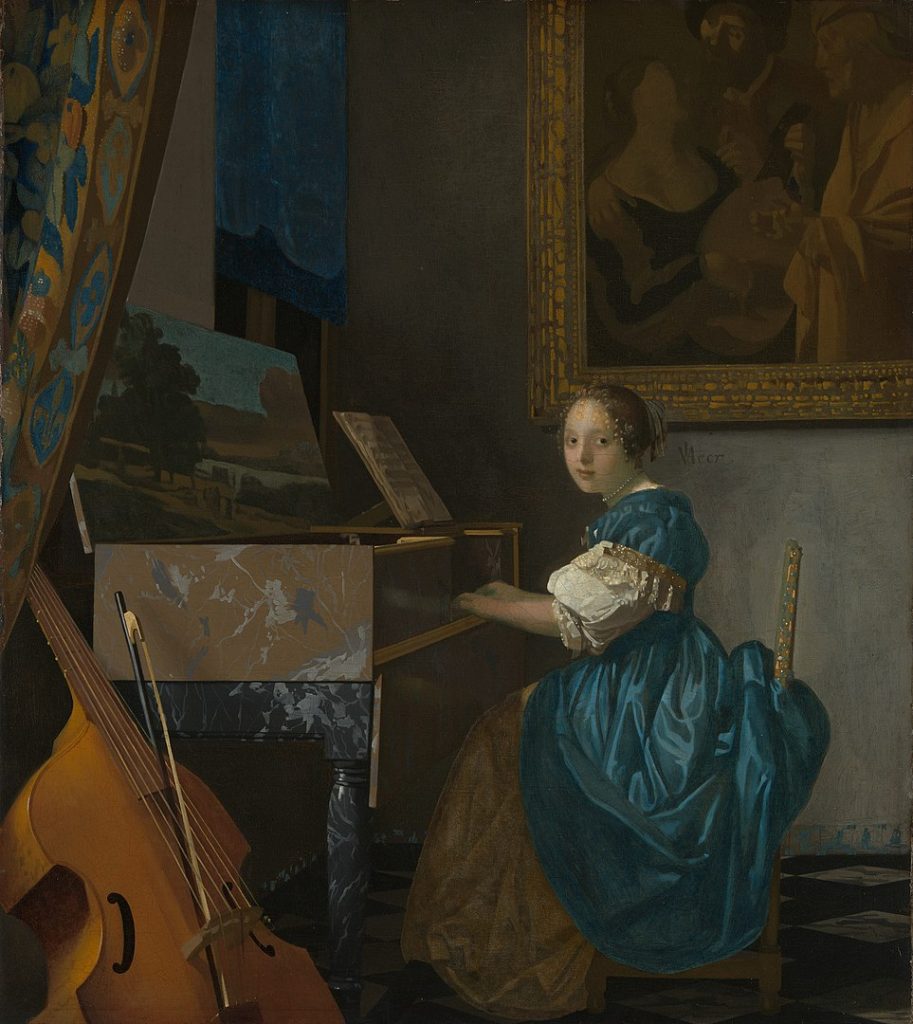
- Limited Output: Vermeer’s oeuvre is relatively small, with only about 34 to 36 paintings attributed to him. This limited output has contributed to the mystique surrounding his work, and each painting is considered a precious gem.
- Famous Works: Some of Vermeer’s most famous paintings include “Girl with a Pearl Earring,” “The Milkmaid,” “The Art of Painting,” and “View of Delft.” “Girl with a Pearl Earring” is particularly iconic and has become one of the most recognizable and celebrated portraits in art history.
- Recognition and Financial Struggles: Despite his artistic talent, Vermeer did not achieve significant financial success during his lifetime. His meticulous painting technique, which required considerable time and effort, may have contributed to his financial struggles.
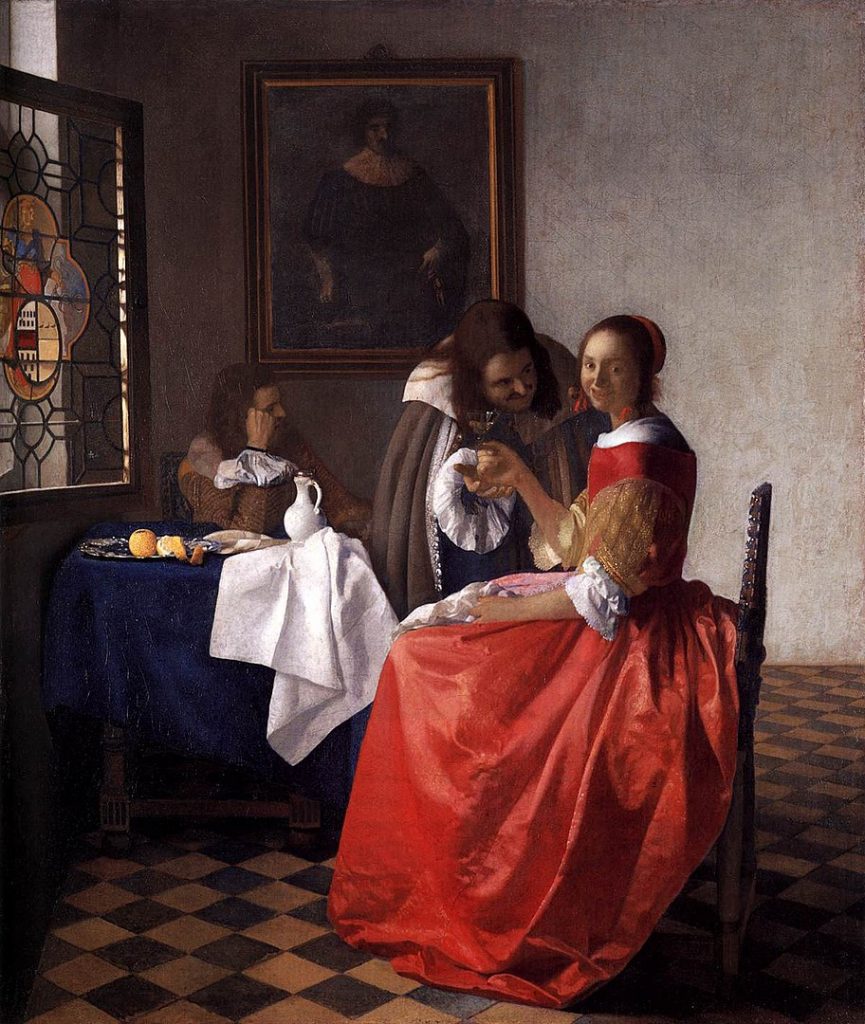
- Legacy: After his death in 1675, Vermeer’s reputation faded into relative obscurity for several centuries. However, in the 19th century, his work experienced a revival, and he is now regarded as a master of Dutch genre painting. His paintings continue to captivate art enthusiasts, and exhibitions featuring his works draw large audiences worldwide.
Johannes Vermeer’s contribution to art lies not only in his technical skill but also in his ability to capture the quiet beauty of everyday life. His influence on subsequent generations of artists and his enduring popularity make him a central figure in the history of Western art.
